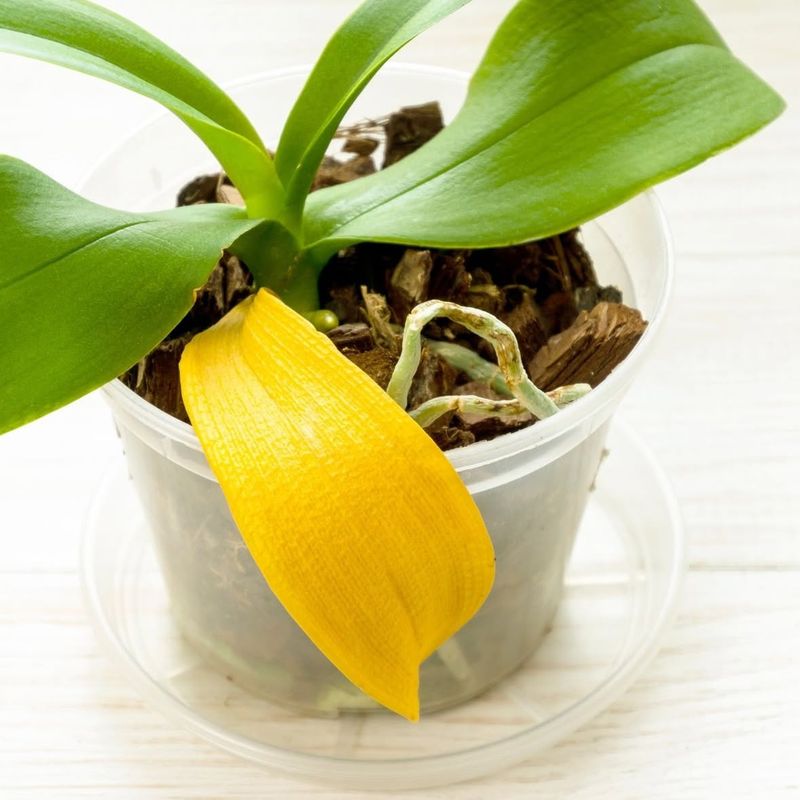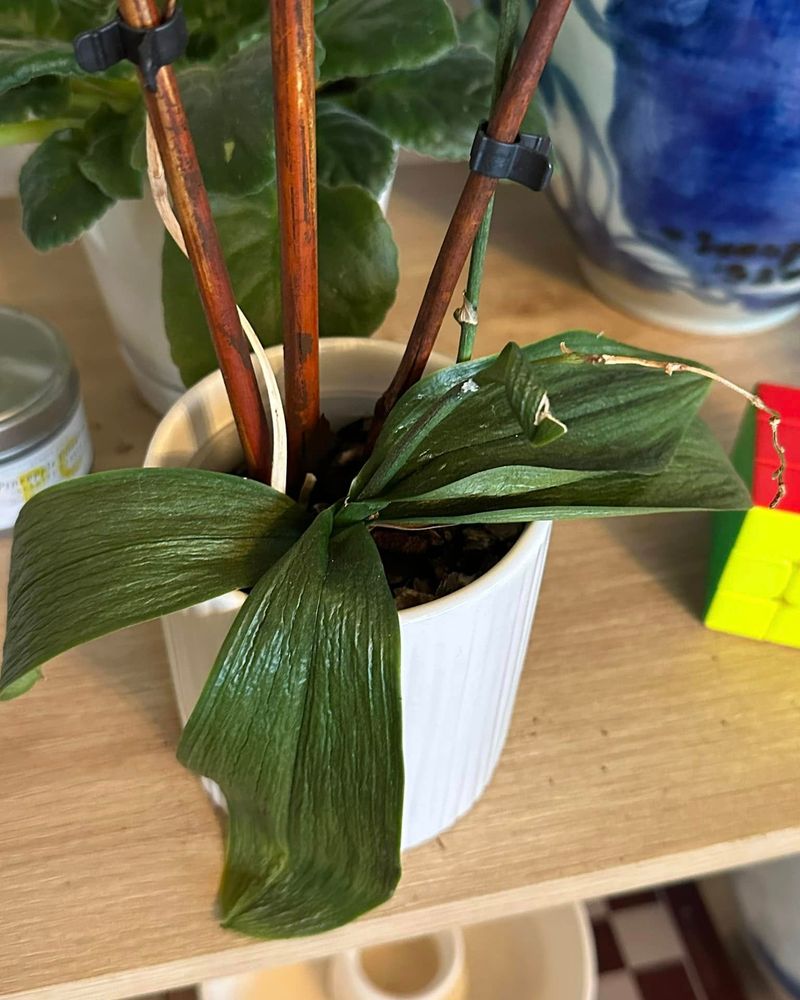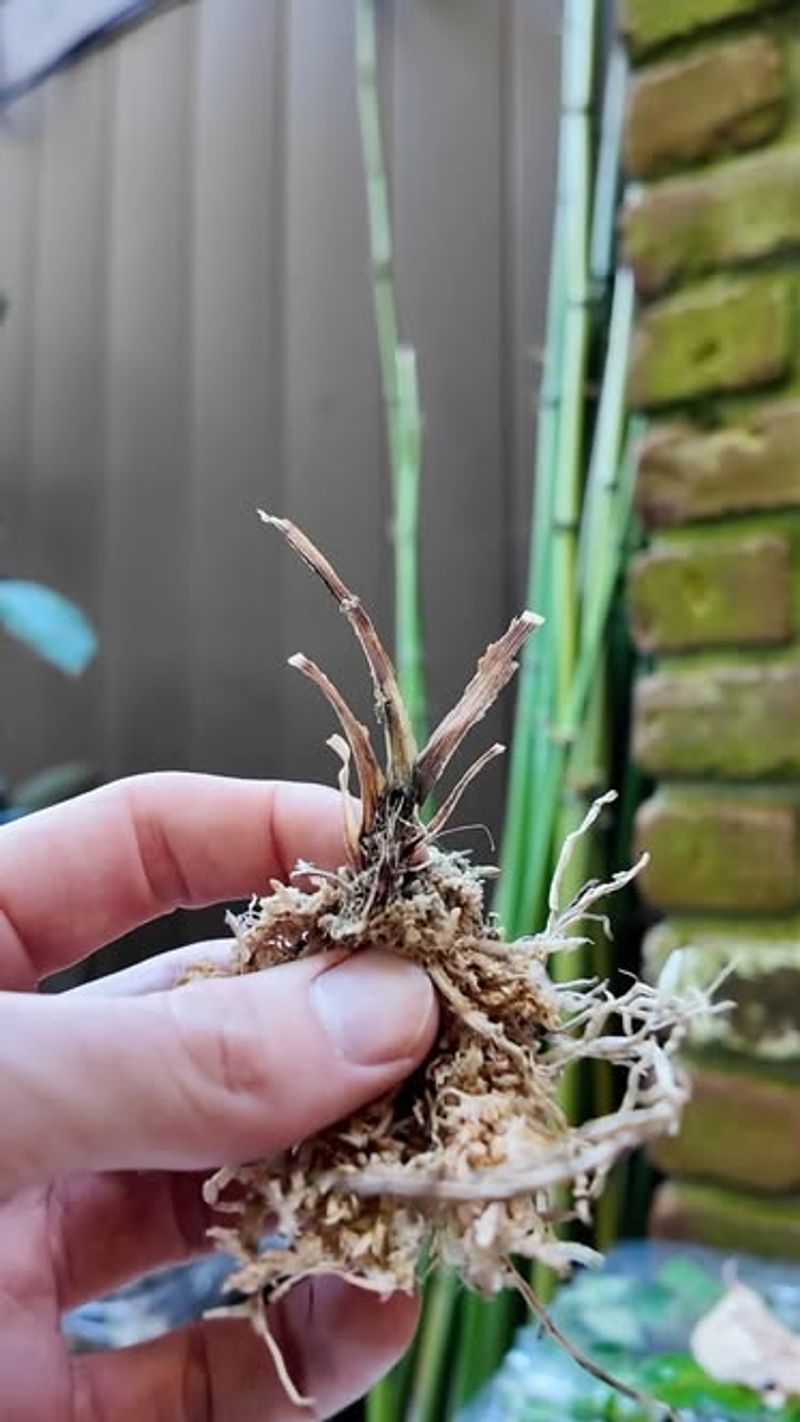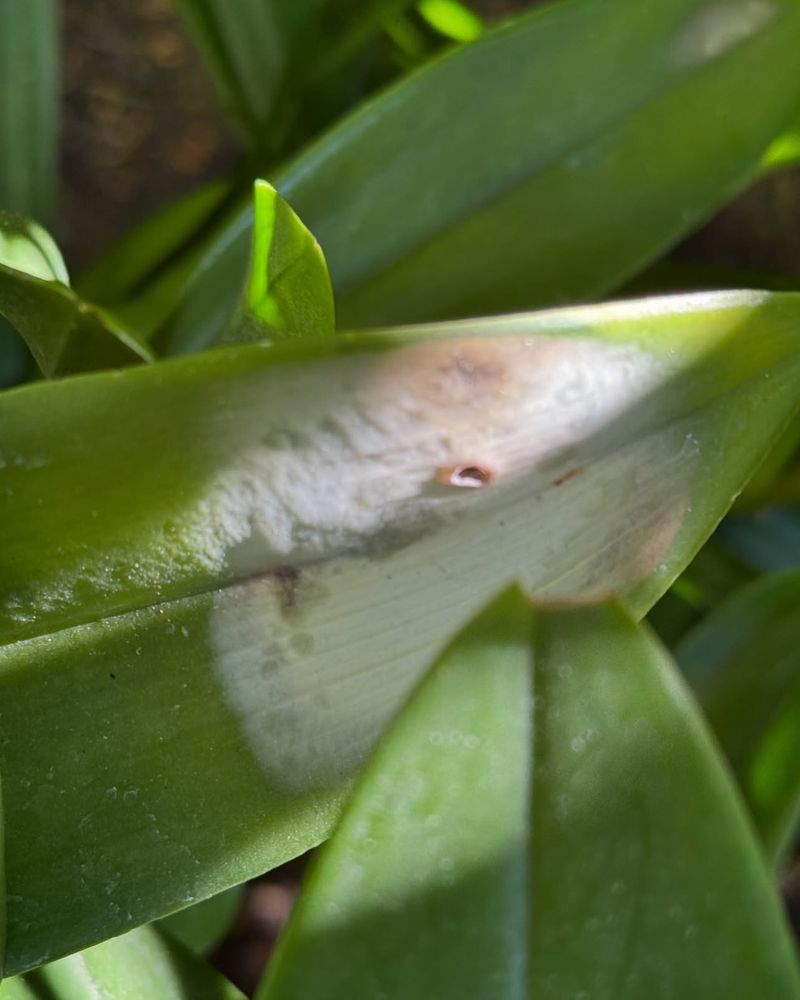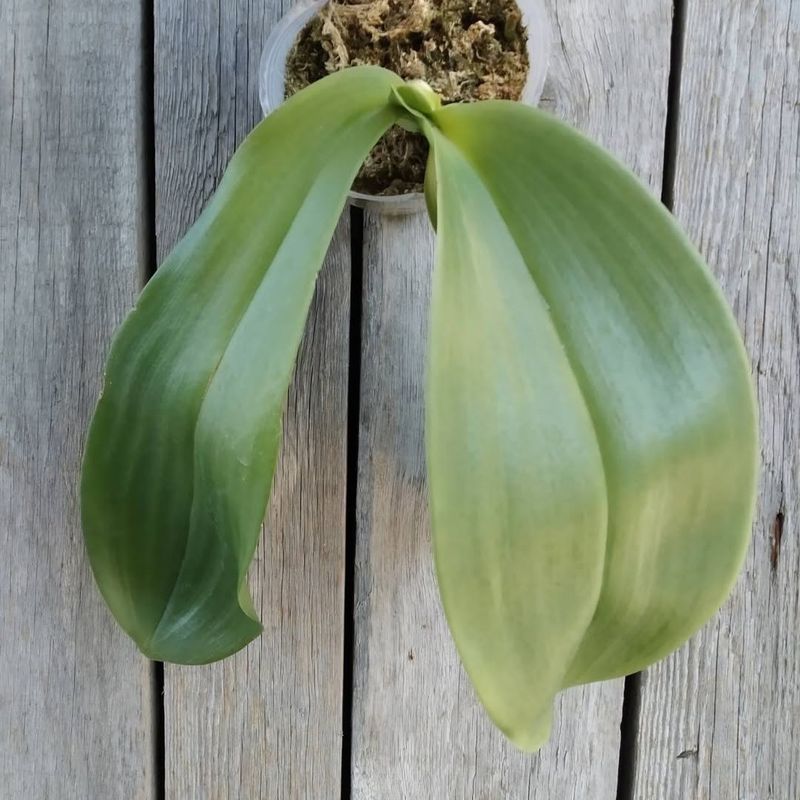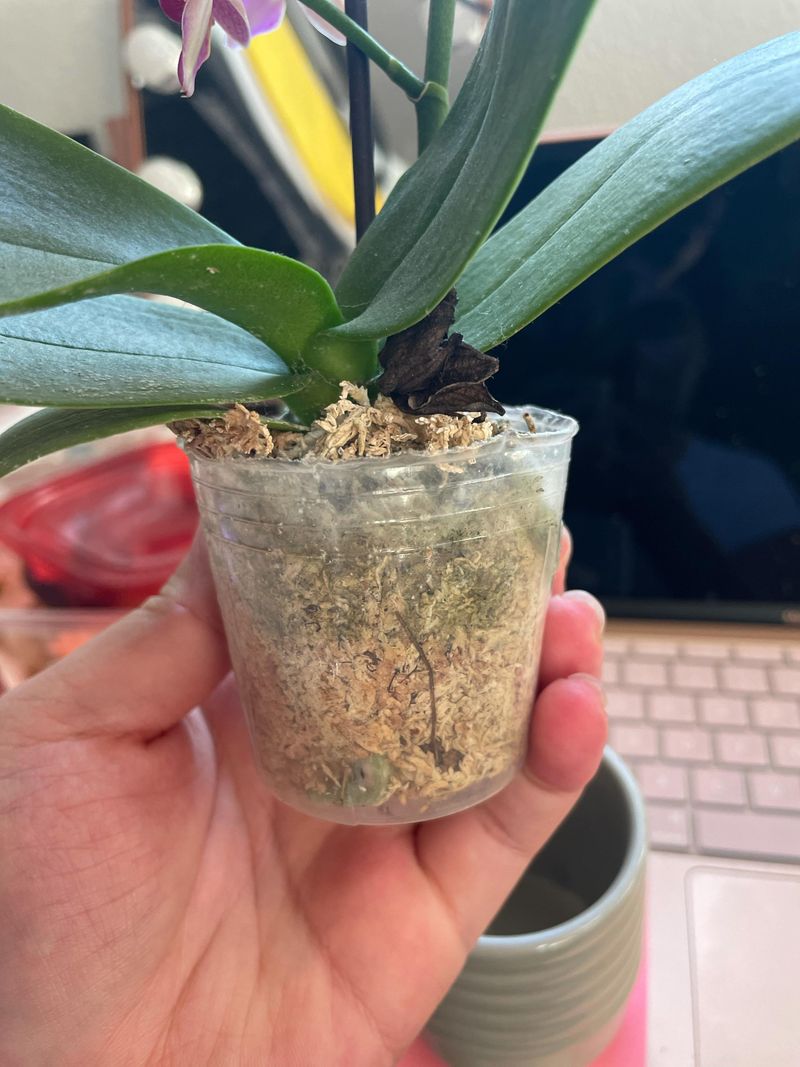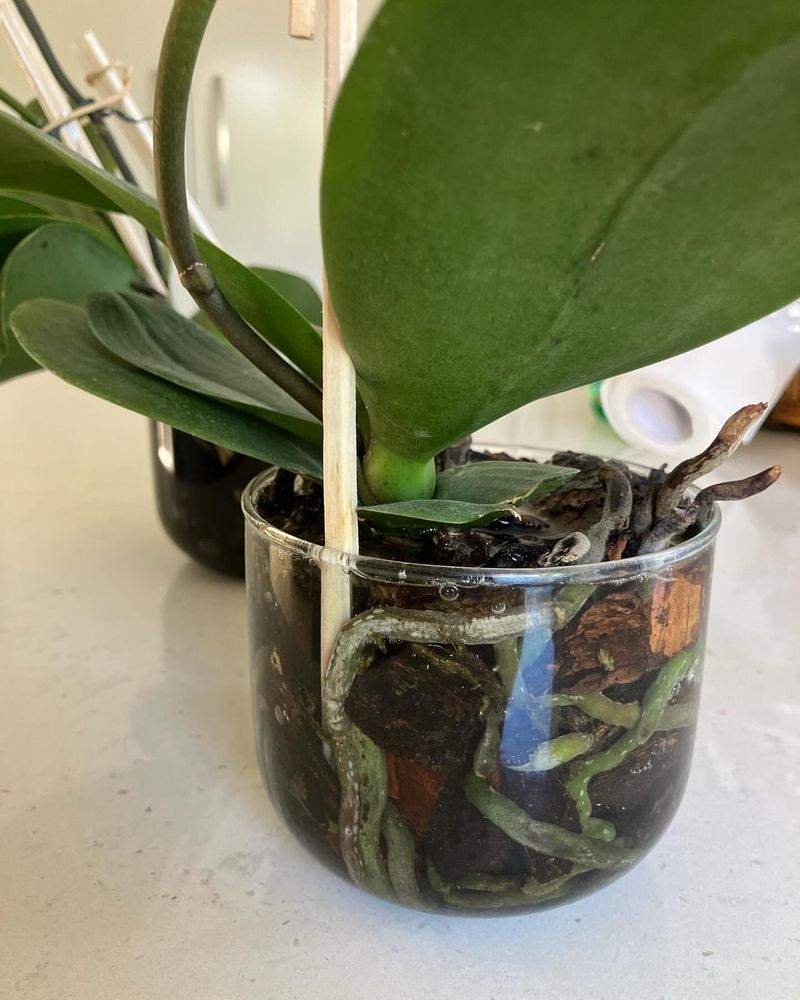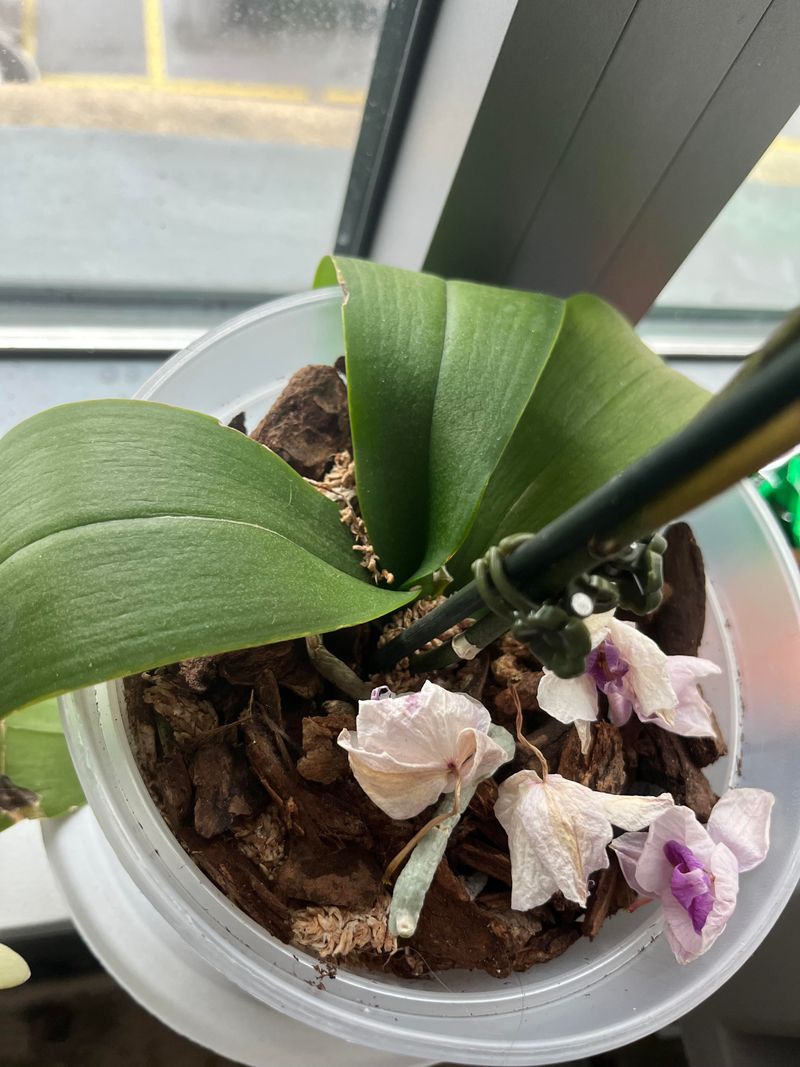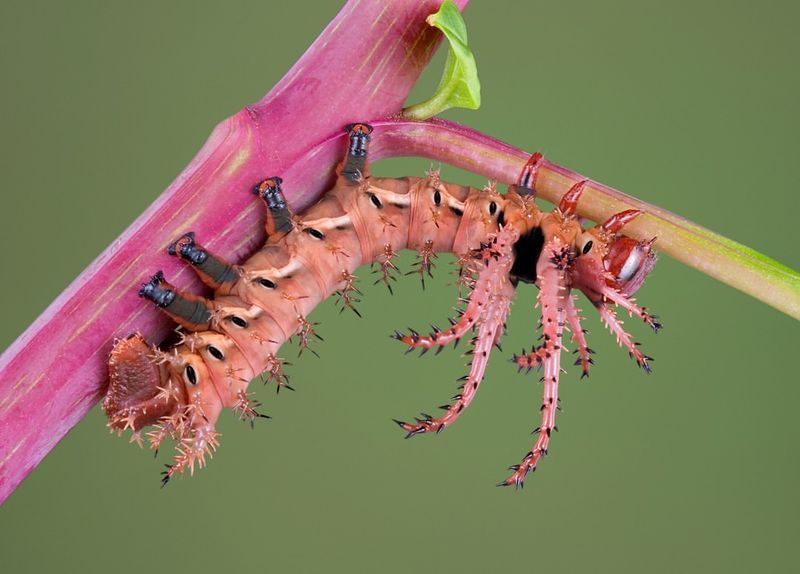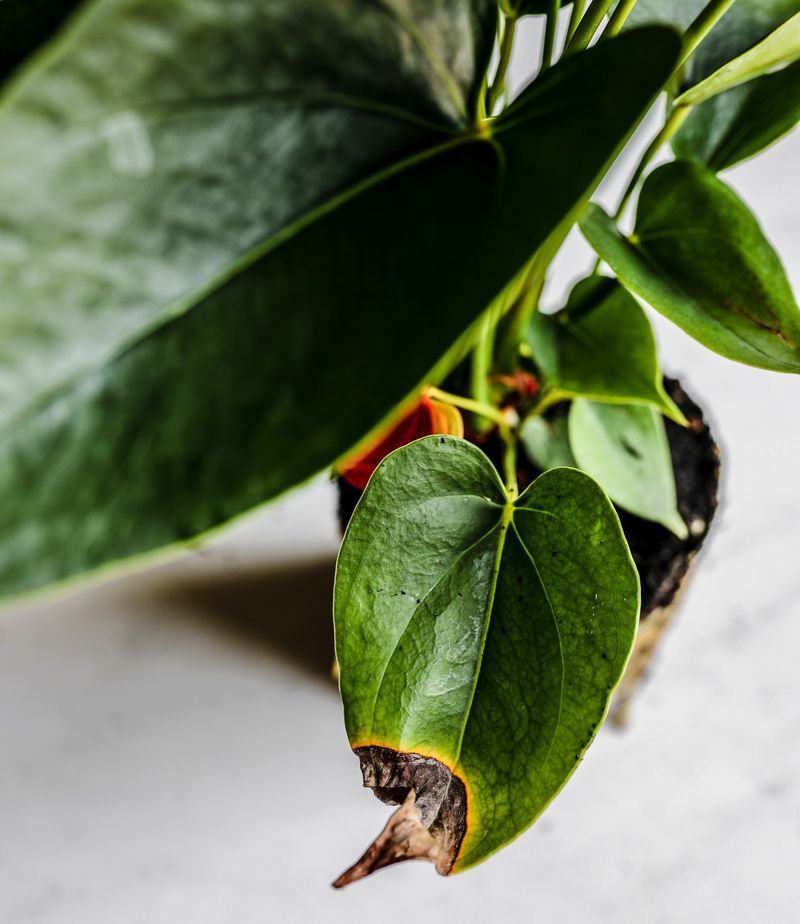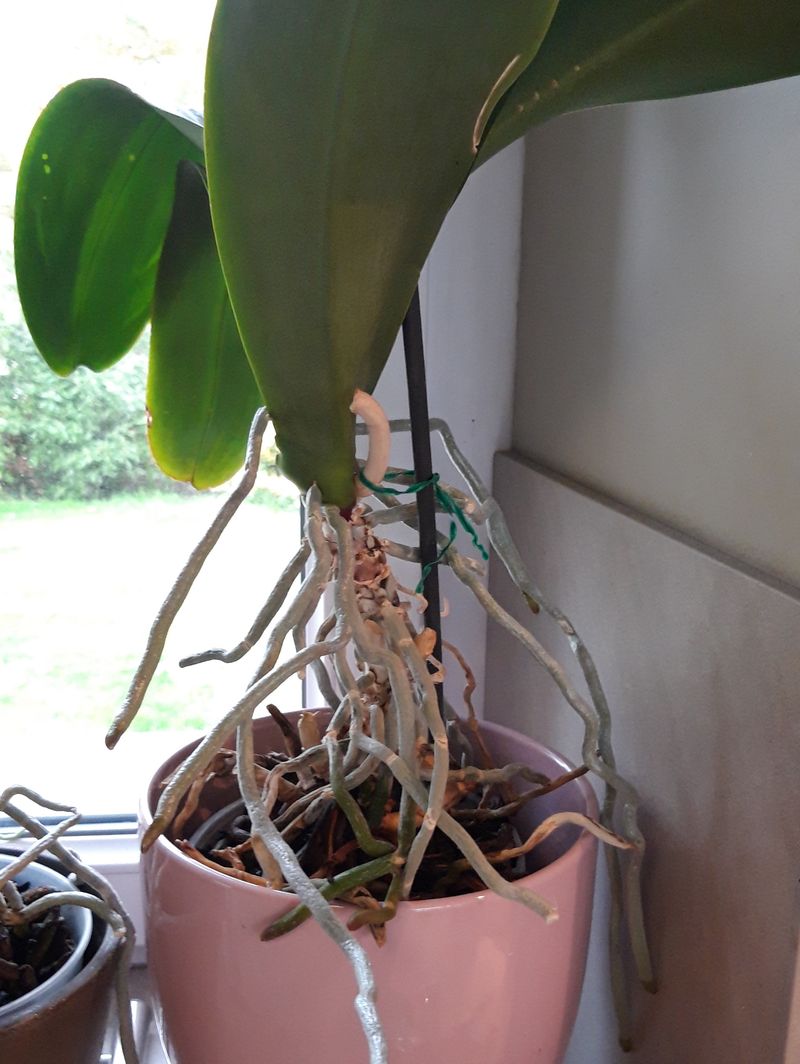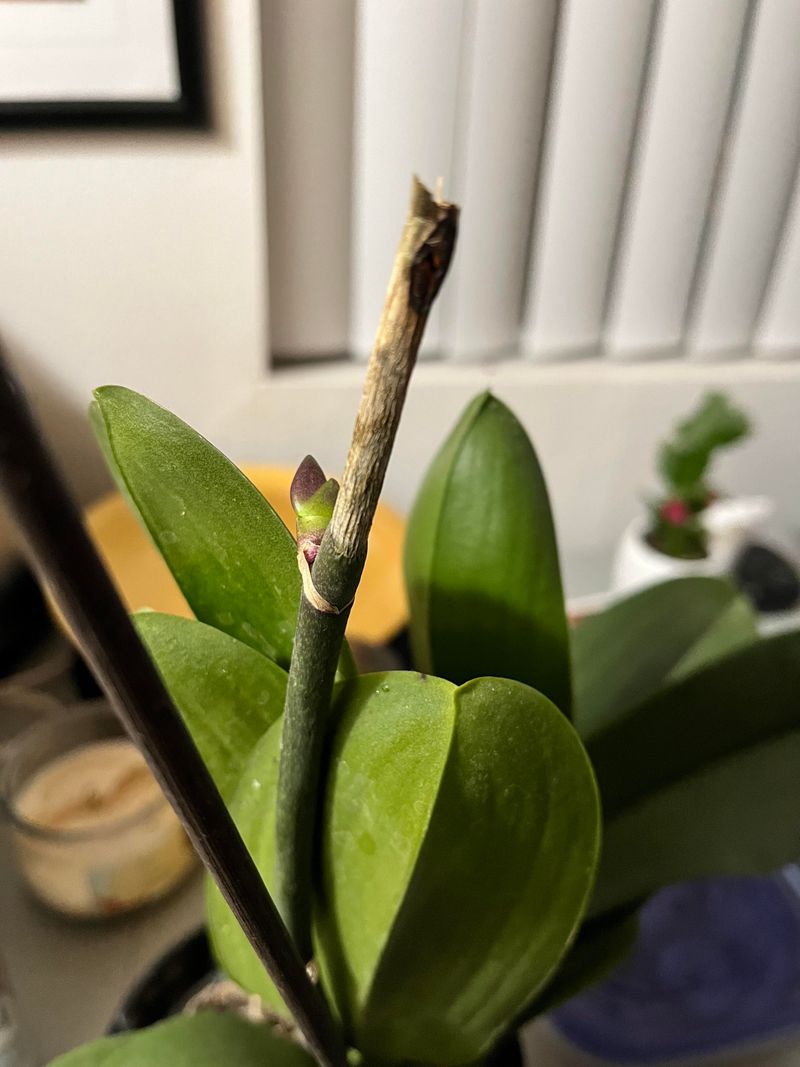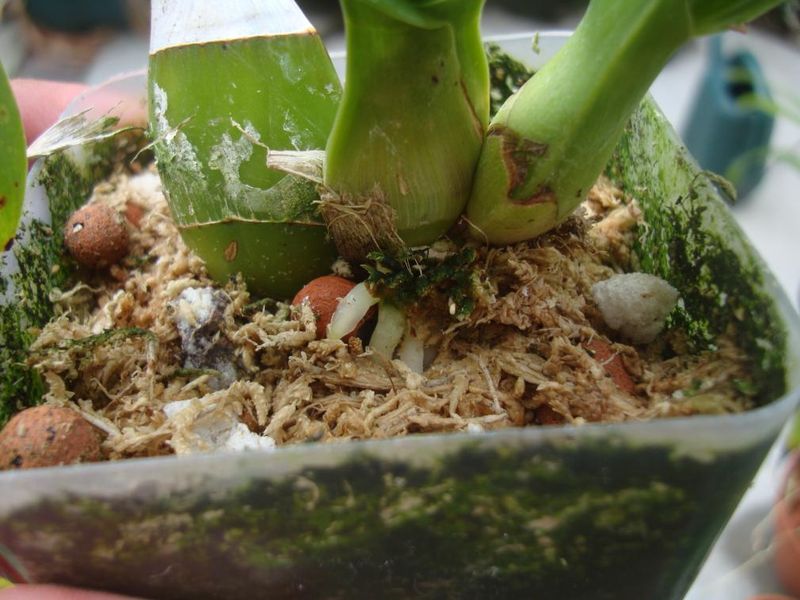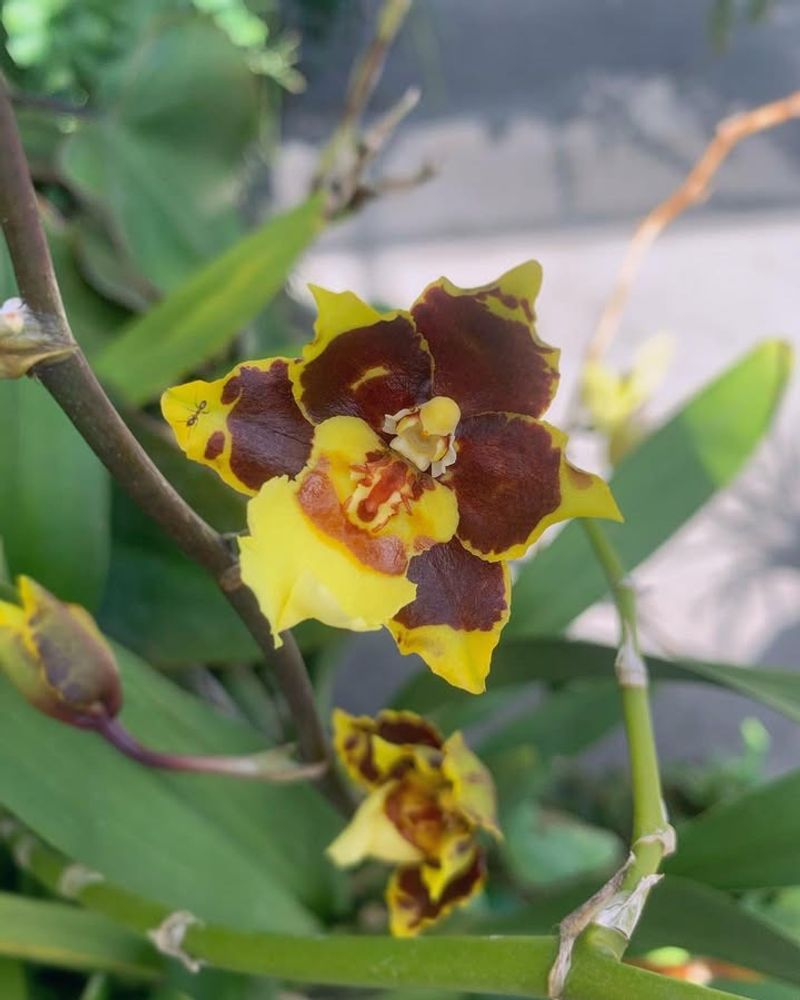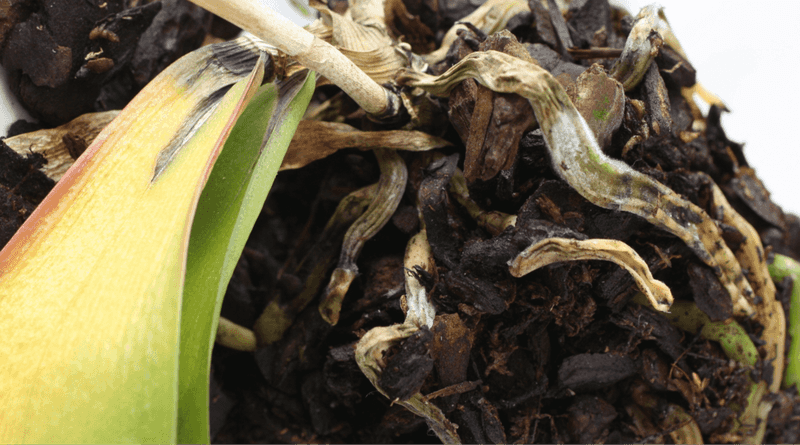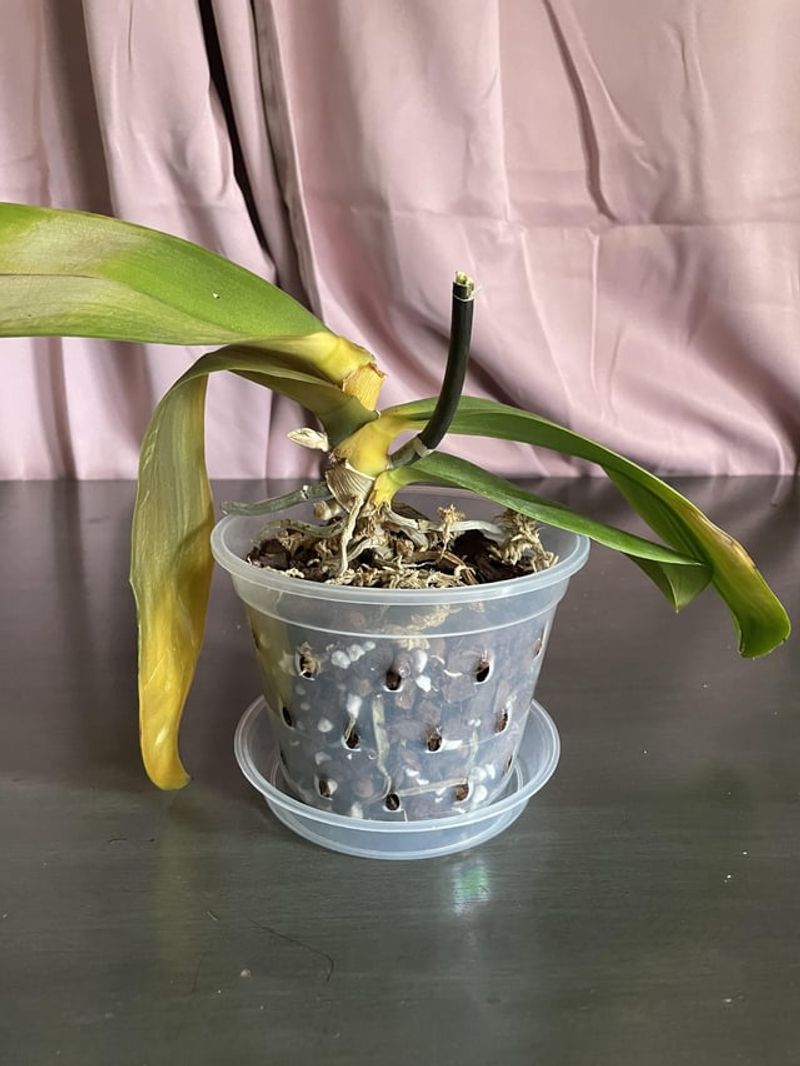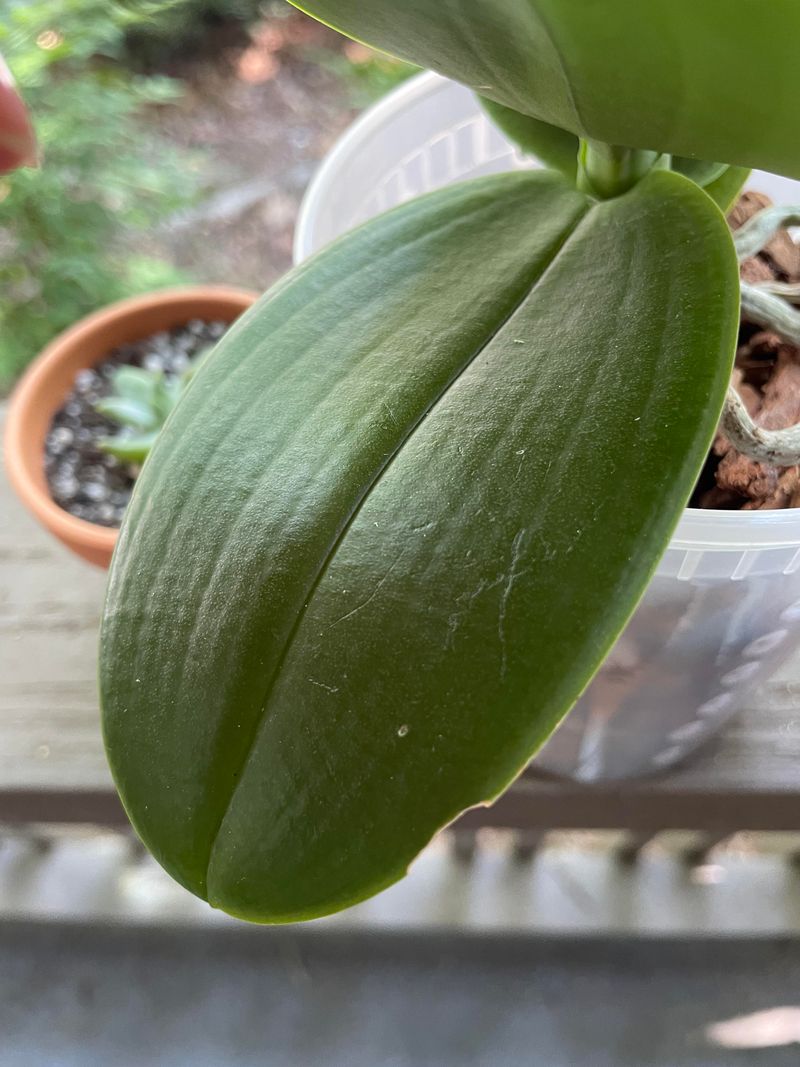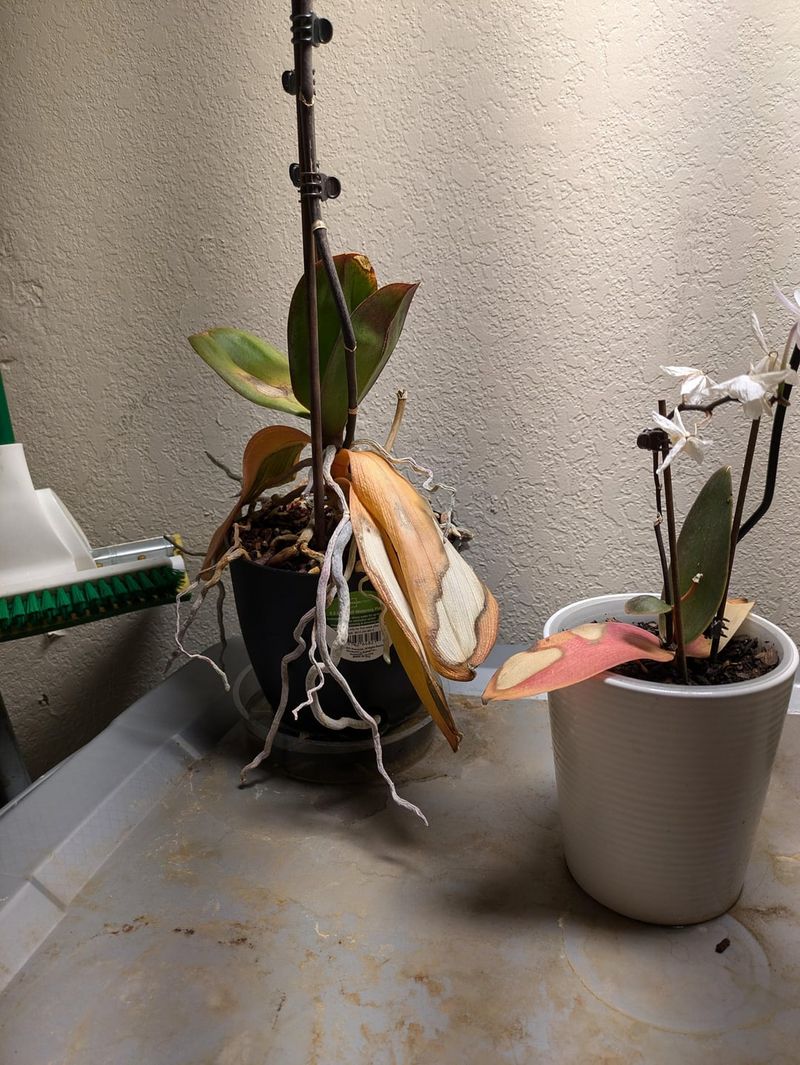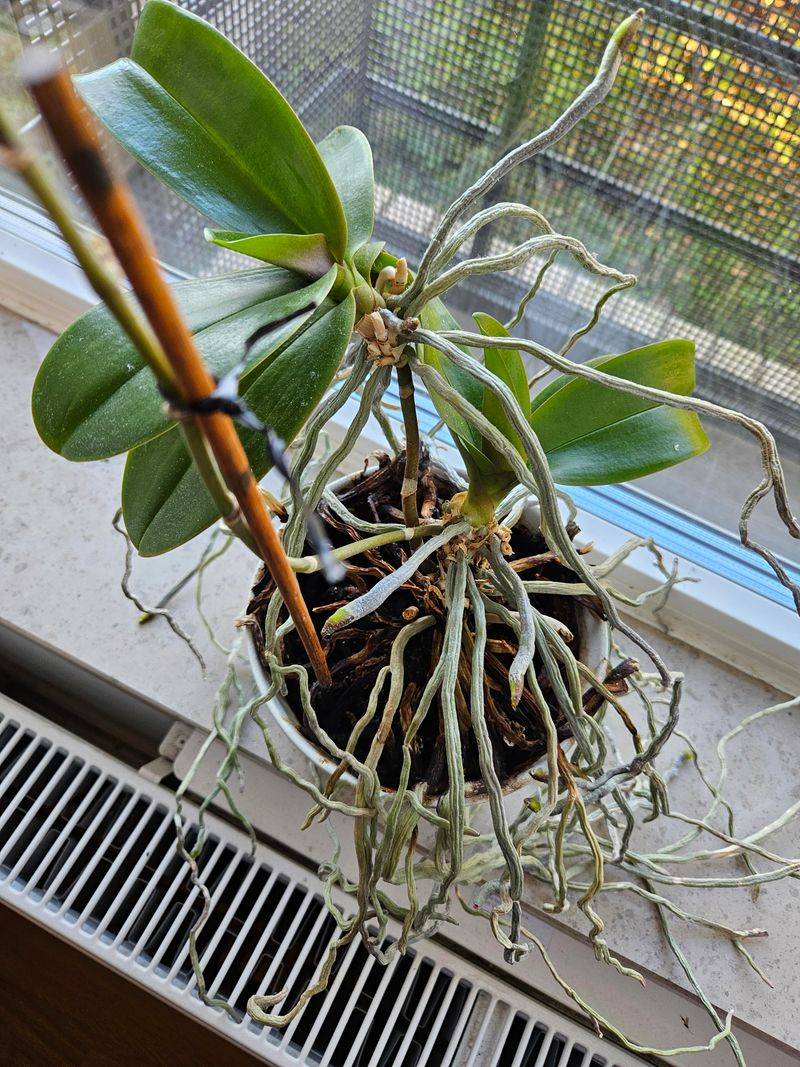Think your orchids need a little boost? Hold that fertilizer. If your plant is showing any of these 23 signs, adding nutrients could do more harm than good.
Over-fertilizing is one of the easiest ways to stress or even kill your orchid, especially if it’s already in survival mode. From yellowing leaves to shriveled roots, we’re breaking down exactly what to look for—and more importantly, what to do instead to get your orchid back on track.
1. Yellowing Leaves
Spotting this color change is a clear red flag. Yellowing leaves may indicate your orchid isn’t happy. It’s often a sign of too much sunlight or overwatering. When leaves turn yellow, adding fertilizer might worsen the situation.
Instead, check your watering schedule and light exposure. Adjust these first before reaching for plant food. Evaluating the environment can work wonders. If yellowing persists, it’s wise to consult a plant expert. This color shift demands attention, but not added nutrients.
2. Drooping Stems
When stems start to droop, it’s time to pause and reflect. This could mean your orchid is under stress. Often, stress can be due to overwatering, insufficient light, or poor potting mix. Fertilizing now might lead to further decline.
Instead, assess the basics: water, light, and potting medium. Consider repotting if needed. By addressing these core issues, you give your orchid a chance to perk up. Hold off on fertilizers until the plant shows signs of recovery.
3. Root Rot Signs
Brown and mushy roots are a plant’s cry for help. Root rot is often caused by poor drainage or constant wetness. Fertilizing a plant with root rot can be harmful. Instead, focus on improving drainage and reducing watering.
Repotting with fresh medium can also help. Monitor root health by checking for firmness and color. Healthy roots are white and firm. Addressing root rot involves patience, but it’s crucial for revival.
4. Leaf Spots
Dark spots on leaves can be more than just a blemish. They often signal pest infestations or fungal infections. Before reaching for fertilizer, tackle these underlying issues. Consider natural treatments or consult with a gardening expert.
Proper airflow and cleanliness can prevent future outbreaks. Fertilizing while leaves are spotted might exacerbate the issue. Prioritize health over growth in such cases. Keeping an eye on leaf quality can guide your care practices.
5. Wrinkled Leaves
Wrinkled leaves often plead for hydration. Dehydration can occur from underwatering or overly dry indoor conditions. Fertilizing now won’t address the core problem. Instead, adjust watering habits and consider humidity levels.
A pebble tray or humidifier can help maintain moisture. Once the leaves begin to plump, you can rethink fertilization. Patience and observation are key to rectifying this issue. Ensuring consistent moisture supports overall plant health.
6. Moldy Potting Mix
A moldy potting mix is a not-so-subtle hint to pause fertilizing. Mold growth is often due to excess moisture or poor airflow. Adding fertilizer to that mix could worsen the environment. Instead, remove moldy parts and improve ventilation.
Consider repotting with a fresh mix if needed. By addressing these issues, you create a healthier space for the roots. Once the mold is managed, you can reassess the need for fertilizer. Healthy roots start with a clean potting medium.
7. New Growth Stalling
When new growth suddenly stops, it’s a call for investigation. This stalling can stem from stress or nutrient imbalances. Fertilizing during this phase might be counterproductive. Check other care aspects like watering and light first.
Sometimes, a simple environmental tweak can kickstart growth. If stalling persists, consider repotting or consulting a specialist. Patience is crucial here. Adjusting care routines can often resolve the issue without fertilizer.
8. Limp Leaves
Limp leaves are often a cry for better care. This can be due to overwatering, underwatering, or exposure issues. Fertilizing won’t fix limp leaves. Instead, evaluate your watering schedule and light conditions.
Adjusting these can often revive the plant’s vigor. If the problem persists, a deeper dive into root health may be necessary. Addressing foundational care aspects should precede any fertilization efforts. Healthy leaves are key to a thriving orchid.
9. Sudden Flower Drop
Flower drop can be disheartening. Orchids might shed flowers due to sudden changes or stress. Fertilizing during this time might do more harm. Instead, assess recent changes in environment or care routine.
Often, stability and consistency in conditions help flowers last longer. If flower drop continues, examine light, water, and temperature. Once the plant adjusts, it might bloom again. Avoiding fertilizer during this sensitive time is wise.
10. Pest Infestation
Tiny invaders can wreak havoc on your plant. A pest infestation demands immediate attention, not fertilizer. Fertilizing might even encourage pest proliferation. Instead, focus on eliminating the pests through natural or chemical means.
Regular inspections and cleaning can prevent infestations. Once pests are under control, you can consider resuming fertilizer. Monitoring plant health is crucial when dealing with pests. Healthy plants often fend off pests more effectively.
11. Brown Leaf Tips
Brown tips are often a sign of distress. This can result from over-fertilization, dry air, or inconsistent watering. Adding more fertilizer could exacerbate the problem. Instead, focus on maintaining consistent moisture and evaluate environmental conditions.
Simply adjusting humidity or watering can often resolve the issue. If brown tips persist, consider trimming them and re-examining care routines. Avoiding fertilizer allows the plant to recover naturally.
12. Weak Flowering
Weak blooms can be frustrating for any gardener. Often, this is due to stress or insufficient nutrients. Fertilizing may seem tempting, but hold off. First, examine environmental factors like light and water.
Sometimes, slight adjustments can enhance blooming. If conditions are ideal, consider other stress factors or consult a specialist. Address underlying issues before adding nutrients. Patience often leads to rewarding blooms.
13. Spindly Growth
Spindly growth is often a quest for better conditions. Orchids grow spindly when light is insufficient or they’re searching for resources. Fertilizing now might not help their plight. First, move them to a brighter spot or adjust care practices.
Sometimes, even a small change in lighting can make a big difference. Improving conditions can lead to stronger, more robust growth. Fertilizing should only follow once growth patterns stabilize.
14. Fungal Infection
Fungal infections need prompt action, not plant food. Fungus thrives in damp conditions, and fertilizing might worsen it. Instead, improve air circulation and reduce moisture levels. Treatment with antifungal agents can also be effective.
Once the infection is under control, reassess the need for fertilizer. Regular monitoring can prevent recurrence. Prioritizing plant health over growth is key when dealing with fungal issues.
15. Brittle Leaves
Brittle leaves often signal a need for moisture. Dry air or insufficient watering can lead to this condition. Fertilizing brittle leaves won’t solve the problem. Instead, enhance humidity levels and ensure regular watering.
A simple humidifier or pebble tray can work wonders. Once leaves regain flexibility, consider nutrient needs. Addressing hydration first is essential. A well-hydrated plant can better utilize nutrients when they’re needed.
16. Salt Crust on Soil
Mineral buildup is a clue to pause the fertilizer. A salt crust on the soil often results from hard water or over-fertilization. Adding more fertilizer would only add to the problem. Flush the pot with distilled water to remove excess salts.
Considering a water softening system might also help. Once the soil is salt-free, you can reassess plant needs. Frequent monitoring can prevent future buildups. Clean soil ensures better nutrient absorption.
17. Browning Flowers
Browning blooms can tarnish the plant’s beauty. Environmental stress, pollutants, or age often cause this. Fertilizing during this phase might not be beneficial. Instead, focus on improving air quality and evaluate recent changes.
Consider moving the plant to a cleaner environment. Often, blooms will last longer with consistent care. Once browning is managed, you can address nutrient needs. Healthy flowers often reflect a healthy plant.
18. Constricted Roots
Roots need space to breathe. Constricted roots in a pot can lead to stress and poor nutrient uptake. Fertilizing in this state might be futile. Instead, consider repotting in a larger pot with fresh medium.
This allows roots to spread and access nutrients better. It’s a good practice to check root space periodically. Once repotted, monitor root health before fertilizing. Roomy roots lead to robust growth.
19. Temperature Stress
Extreme temperatures can leave any plant stressed. Orchids are sensitive to sudden temperature fluctuations, leading to wilting or leaf drop. Before considering fertilizer, ensure stable conditions. Move the plant away from heat sources or drafts.
Consistent temperature often prevents further stress. Once the plant stabilizes, you can evaluate if nutrients are needed. Temperature management is crucial for orchid health.
20. Overwatering Signs
Too much water can be a silent killer. Soggy leaves and a waterlogged pot are telltale signs. Fertilizing during overwatering can drown the plant further. Instead, let the pot dry out and adjust watering habits.
Consider using a well-draining potting mix. Monitoring water levels is vital for recovery. Once the plant recovers, assess if fertilizing is necessary. Balanced watering often leads to a thriving plant.
21. Underwatering Signs
Parched leaves tell a story of neglect. Dry and curled edges often point to underwatering. Before fertilizing, quench the plant’s thirst. Increase watering frequency and ensure even moisture distribution.
A consistent watering schedule is key. Once the plant rehydrates, you can consider nutrient needs. Observing plant signals helps in providing optimal care. Water first, feed later is often a good rule.
22. Environmental Shock
A sudden change can leave plants reeling. Environmental shock from relocation or changes in care can cause wilting. Fertilizing during this period might stress the plant more. Instead, allow the plant time to adjust.
Keep conditions stable and monitor its response. Often, orchids bounce back once they acclimate. Avoid fertilizer until signs of recovery are visible. Patience and observation are key to overcoming shock.
23. Nutrient Burn
Burnt edges scream caution. Nutrient burn from over-fertilization damages leaves and roots. Cease fertilizing immediately upon noticing this. Flush the soil with clean water to remove excess salts.
Give the plant time to heal before reassessing nutrient needs. Regularly inspecting for burn signs can prevent future issues. Moderation in fertilizing often leads to healthier growth. Less is sometimes more when it comes to feeding orchids.


